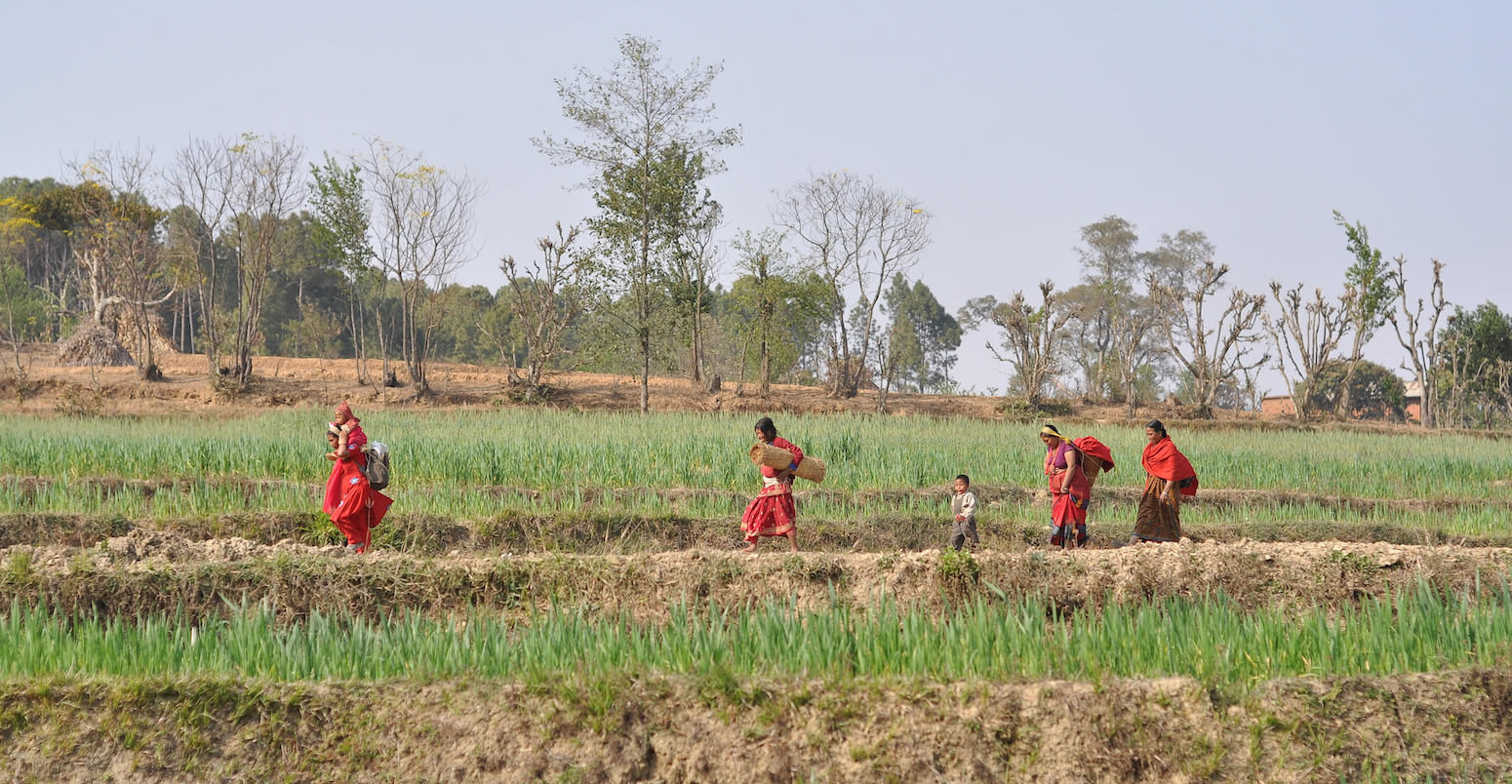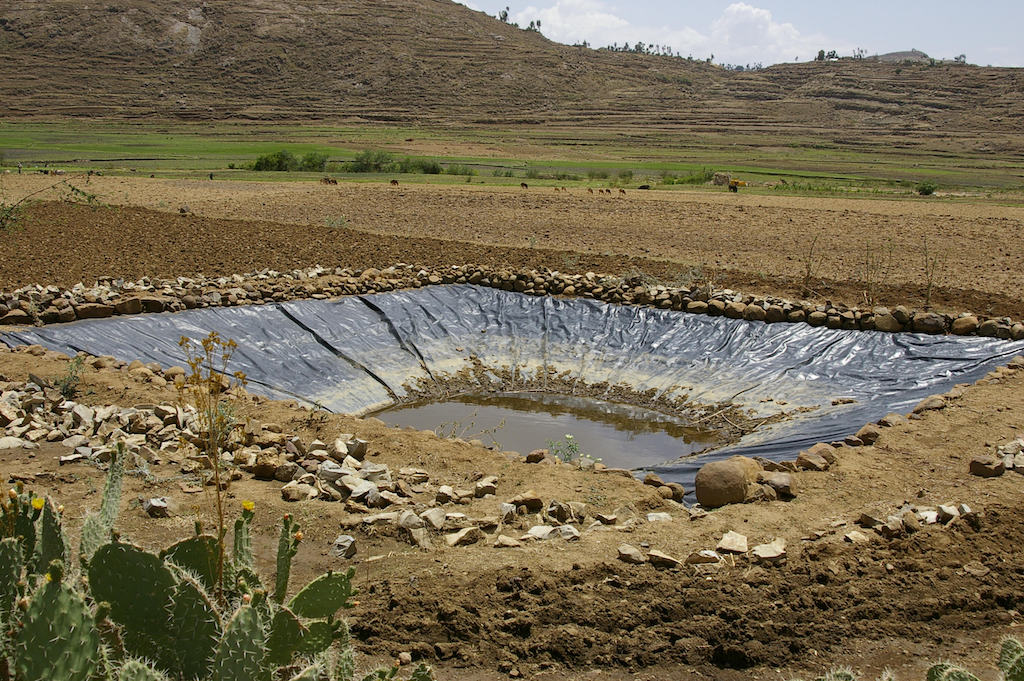
Guest post: Why avoiding climate change ‘maladaptation’ is vital

Guest authors
02.10.21
Guest authors
10.02.2021 | 10:28amWith the delayed UN climate talks coming up this year, COP26 president Alok Sharma recently launched a “Race to Resilience” to underscore the urgency of adapting to climate change.
However, in our new study – published in the journal World Development – we come to the unsettling conclusion that many adaptation projects can make people more, rather than less, vulnerable to climate change. This is known as “maladaptation”.
Academics and practitioners have spent many years promoting the idea that adaptation can reinforce sustainable development (pdf) and even offer a way to rethink development in light of the changing climate. So, is adaptation at an impasse?
No. In fact, we argue that adaptation is needed more than ever, but that it should be rethought.
Over the past decade, in the justified rush to provide assistance in the face of climate change impacts across the globe, many existing development aid institutions and approaches have been quickly re-purposed for the provision of “adaptation aid”.
But our analysis suggests that the timescales, participants and ultimate purpose of adaptation are often confused – resulting in well-intentioned, but misguided, investments that are backfiring to make climate change worse for many people.
The reality is that it is very difficult to give easy blueprints for “successful adaptation” – or how to measure it. This is because adaptation is a long-term process and is dependent on specific circumstances.
While a clear picture of successful adaptation may be difficult to pin down, our findings suggest that we can identify what it looks like when things go wrong with adaptation planning – and how not to make those mistakes in future.
What is ‘maladaptation’?
Understanding what processes lead to maladaptation and how to avoid it remains the subject of intense discussion.
Broadly defined, maladaptation is when climate change adaptation actions backfire and have the opposite of the intended effect – increasing vulnerability rather than decreasing it.
In our paper, we identify three ways in which adaptation projects have affected vulnerability in often harmful and unintended ways.
First, when adaptation reinforces existing vulnerability. Adaptation interventions can reinforce existing inequalities in the distribution of decision-making authority.
In São Tomé and Príncipe, for example, an externally funded adaptation intervention – that aimed to increase productivity through agricultural modernisation – was only offered to those who had land, ignoring the landless. The landless are often considered more vulnerable to climate change precisely because their livelihoods are less secure. Therefore, such an approach marginalised them even further.
More commonly, adaptation policies fail to alter the social and political dynamics that have produced different levels of vulnerability patterns in the first place.
Even adaptation processes specifically aiming to foster participation and social inclusion can entrench, rather than challenge, existing power relations – the rules and relationships in society that determine whose voice is heard and whose decisions count. In Vanuatu, a study showed that adaptation projects did not address systemic inequalities and power relations, and this resulted in division, conflict and, ultimately, unsustainable change.
The second way is when adaptation redistributes vulnerability. Aid projects can have negative impacts elsewhere and this is also true for adaptation projects.
In Vietnam, for example, hydroelectric dam and forest protection policies to regulate floods in lowlands at first appeared beneficial for reducing vulnerability to specific hazards there. However, on closer inspection, these policies undermined access to land and forest resources for mountain peoples upstream. This meant that the intervention resulted in them becoming more vulnerable to the impacts of climate change.
Finally, the third way that adaptation can go wrong is when projects create new sources of vulnerability. In focusing on short-term change, some adaptation efforts inadvertently introduce longer-term risks.
The immediate need to increase agricultural productivity in areas that experience drought may lead to irrigation as a potential solution. That irrigation may bring short-term benefits by ensuring farmers a harvest, but if drought frequency is going to increase then the water table will continue to decline. Thus, encouraging reliance on water that is not guaranteed will bring about maladaptation.

Moreover, the false confidence provided by such initiatives may further lock people into situations and livelihoods. In the case of irrigation, for example, the high initial capital investment costs may leave people without the money to try alternative ways of earning a living when the water runs out.
In addition, projects can introduce attitudes of complacency and reduce how prepared they are. In Bangladesh, for example, construction of levees to protect people from tropical cyclones, storm surges and sea level rise can create a false sense of security and encourage more development in high flood-risk areas. As a consequence of such infrastructure development in the Jamuna River floodplain, there is evidence that mortality rates have actually increased.
Implications for planning
As the climate continues to warm and its impacts become ever more evident, adaptation remains urgent. However, it is important that adaptation is not used as a sticking plaster, but instead brings a change in the systems that produce vulnerability in the first place.
Developed countries, who have benefited the most from industrialising their economies, have a moral obligation to address both the causes of climate change and vulnerability to it.
Despite good intentions, many formal adaptation interventions so far replicate old mistakes and end up making matters worse. However, we know many of the reasons why this can occur. These include:
- A blueprint approach to adaptation that is based on insufficient understanding of the vulnerability context and social inequities. For instance, project designers may omit accounting for the fact that men and women have different experiences of risk, which can lead to (further) inequities between groups.
- Little critical analysis or evaluation of long-term effects and potential positive and negative spill-overs on other areas or groups. For example, focusing on the short-term at the cost of adapting in the long-term.
- Little – or no – participation by marginalised groups in the design and implementation of adaptation projects. Communities are never uniform and so failure to represent the diversity of opinions can lead to people with power retaining project funds and ownership within their own circle of allies – or the most educated members being the only ones with the knowledge to navigate complex bureaucracy.
- Retrofitting adaptation project goals to match existing development assistance rather than specific consideration of climate risk and societal drivers of vulnerability. This means that existing development activities are rebranded as adaptation and new adaptation projects are co-opted to support existing development agendas, neither of which takes place with due consideration of future climate risk.
- Defining “adaptation success” according to dominant development agendas and interests of the most powerful or well-connected groups. This can leave the interests of the most marginalised groups invisible in adaptation planning.
Improving adaptation planning
Our findings point to specific actions that decision-makers can make to avoid adaptation going wrong.
First and foremost, setting out clear guidelines for donors and implementing agencies on how to design and implement adaptation projects. These should take into account the need for co-designing projects with local actors and be based on a solid understanding of context and needs.
This action needs to be brought about by donors and climate finance institutions in order to change the way in which adaptation interventions are designed and implemented.
Second, we need to shift attention from how much money is – and should be – available for adaptation and instead focus on the effectiveness of money that is available.
We already know that the numbers mean very little – and can be misused to create false prioritisation for funding. Rather than debating the quantity of funding, we need to ask how adaptation projects can actually reduce vulnerability – and how they can do it better, targeting the people who are most in need.
Finally, adding adaptation to existing development projects is not enough – adaptation needs to be new and different.
Currently the international climate finance landscape often encourages retrofitting of development projects. Yet countries are clear that they want to differentiate between money used for “regular” development from money used to address climate change. Thus project proposals are often required to indicate which actions are specifically for “adaptation” versus those that are for “development”.
This blinkered approach encourages thinking in the same way with minor modification when, in fact, the nature of climate change both requires and affords us the opportunity to transform our approaches.
We owe it to the most vulnerable and marginalised populations to do so.
Eriksen, S. et al. (2021) Adaptation interventions and their effect on vulnerability in developing countries: Help, hindrance or irrelevance? World Development, doi:10.1016/j.worlddev.2020.105383
-
Guest post: Why avoiding climate change ‘maladaptation’ is vital
-
Guest post: When climate change adaptation can backfire

